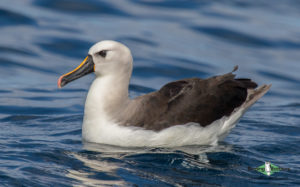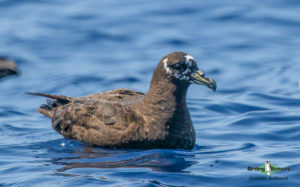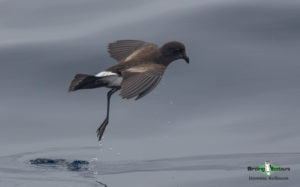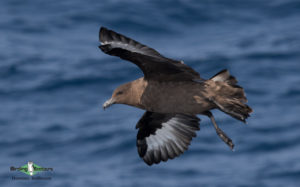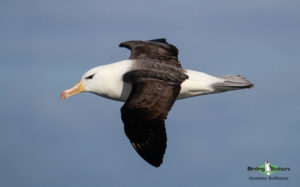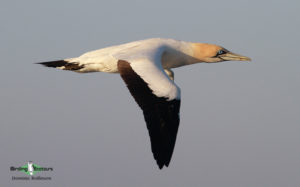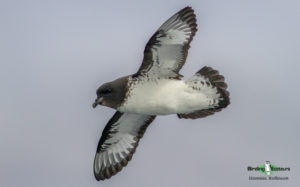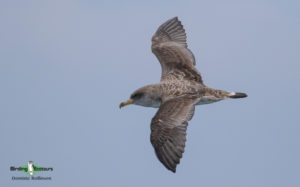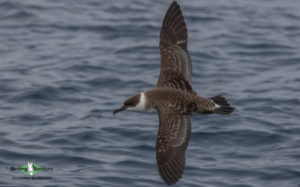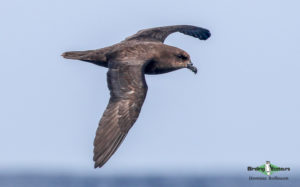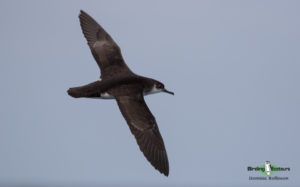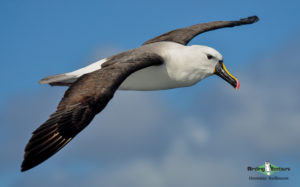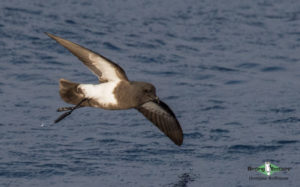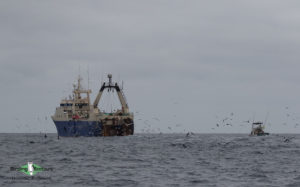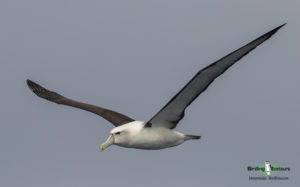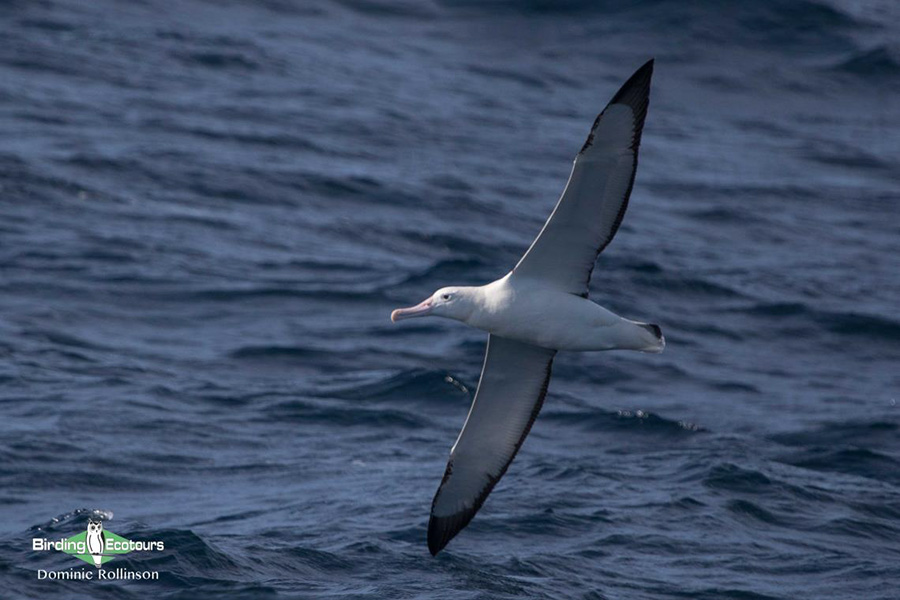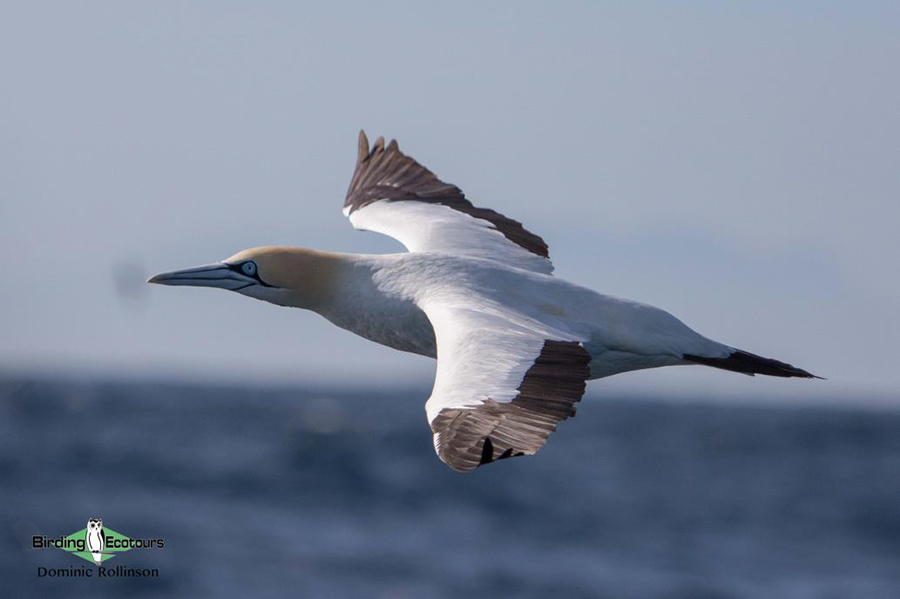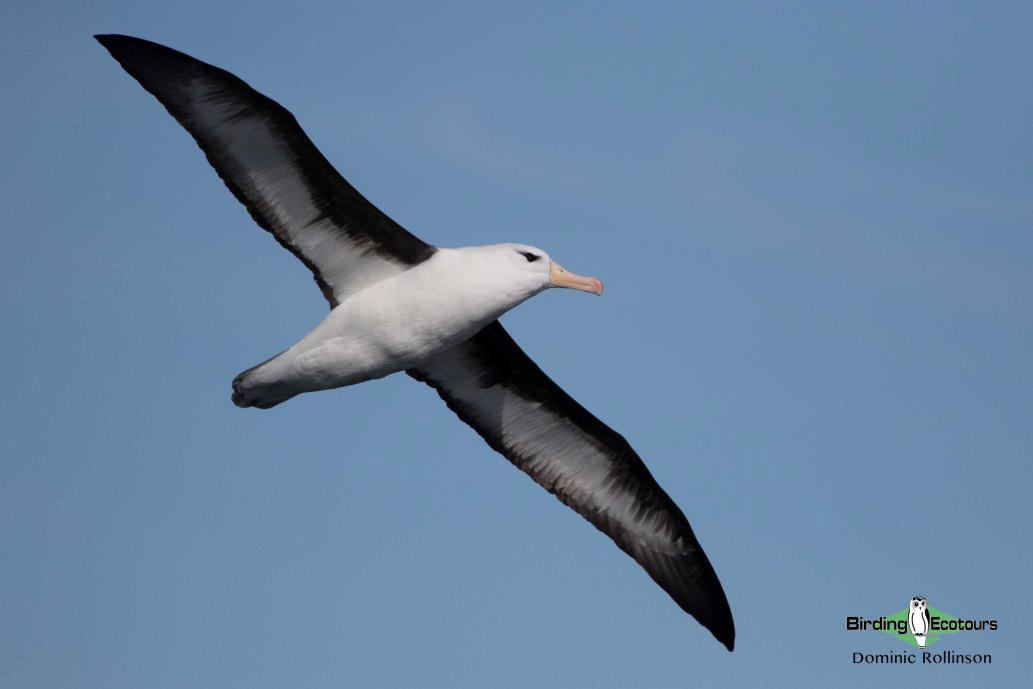1-day Cape Town Pelagic Trip
Go to: Birding Ecotours Pelagics | Birding Ecotours Cruises | South Africa Day Tours | Full length South Africa Birding Tours | Birding Tours in Africa | All our birding tours
Cape Town Pelagic Trips
A Cape Town pelagic is a spectacle that all birders should experience at least once in their lifetime (see our video of a typical pelagic here). Many consider Cape Town to be one of the top pelagic birding destinations in the world. On these pelagics we head out searching for fishing trawlers which attract thousands of seabirds of a wide variety of species. It is then a case of searching through the commoner species to hopefully pick out the odd rarity or two. Expect a multitude of albatrosses, petrels, shearwaters, as well as other coastal species such as cormorants and gannets.
This video will give you an idea of what a Cape Town pelagic is like.
Most of our pelagics leave from Simon’s Town harbor, from where we head out of the beautiful False Bay, sailing very close to the dramatic sea cliffs of Cape Point, Africa’s south-westernmost tip. Before leaving the bay, we will already encounter our first pelagic seabirds, such as Sooty Shearwater as well as Brown Skua and Cape Gannet. Heading south from Cape Point we may encounter Cory’s, Manx (tough), and Great Shearwaters in the summer months. The greatest spectacle awaits us when we reach the rich trawling grounds 30 kilometers (18 miles) or so beyond Cape Point. Literally thousands of albatrosses, petrels, pattering flocks of storm petrels, and many others gather around hake-fishing boats. This is one of the most unbelievably amazing spectacles that any birder can experience!
White-chinned Petrels are normally the most abundant birds around the trawlers, with smaller numbers of Southern and Northern Giant Petrels and the odd Great-winged Petrel. The Cape is one of the best places in the world to find Spectacled Petrel; these birds enter our waters in the summer in very low numbers. Although sightings are far from guaranteed, January/February are the best months for this species. Albatrosses are normally present in large numbers and include Shy, Black-browed, Indian Yellow-nosed, and Atlantic Yellow-nosed Albatrosses, while we are always on the lookout for the rarer Wandering, Southern, and Northern Royal Albatrosses.
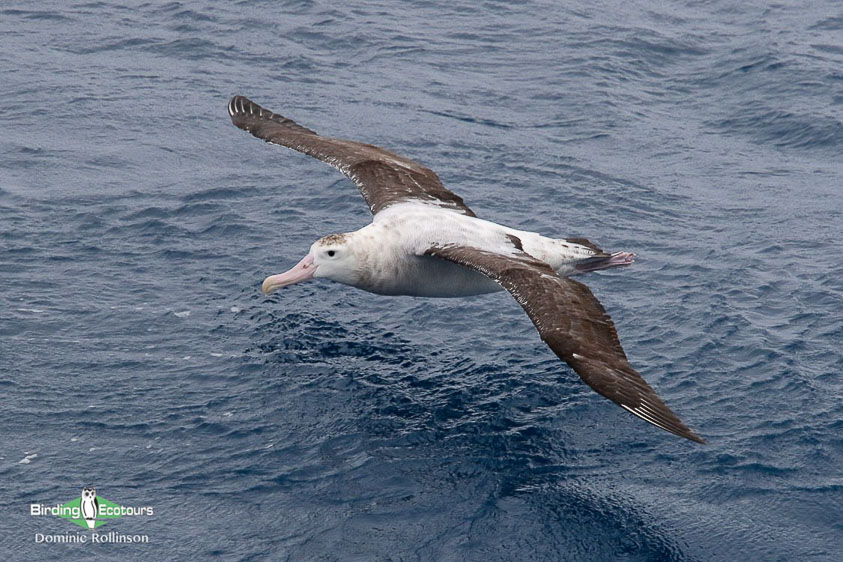
During the winter months large flocks of Cape Petrels push up from the cold subantarctic waters as well as Antarctic Prions. Storm Petrels are dominated by Wilson’s, with large numbers of European in the summer, while Black-bellied is a passage migrant and only likely for a couple of weeks in April/May and again in September/October each year.
Closer inshore we may encounter small numbers of Parasitic and Pomarine Jaegers during the summer months as they harass fishing terns, while African Penguins and Cape, Crowned, and Bank Cormorant are almost guaranteed as we come back into the harbor. One of the most exciting aspects of pelagic birding off the Cape is that you never know when the next mega-rare species may turn up!
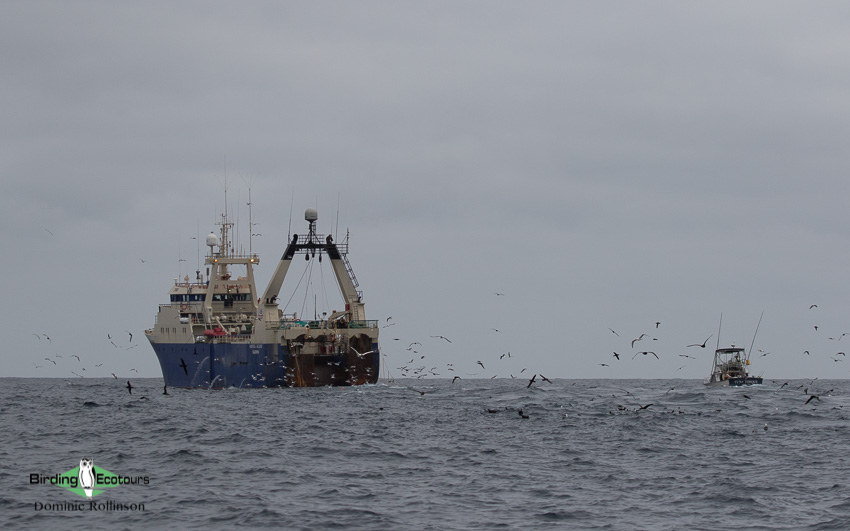
Some people are wary of seasickness, but for those who brave this, pelagic trips can be true highlights of any birding career. With luck we may also find Bryde’s Whale as well as Humpback and Southern Right Whales (both seasonal visitors), Cape Fur Seal, and dolphins (Long-beaked Common and Dusky Dolphins are most abundant). The boat returns to the harbor at about 3:00 p.m.
We ask participants to meet at 6:45 a.m. at the Simon’s Town harbor for departure around 7:00 a.m. If you need a transfer, please e-mail [email protected].
Download ItinerarySOUTH AFRICA: 1-DAY CAPE PELAGIC TRIP REPORT
By Dominic Rollinson
This is an example of a typical Cape Town birding pelagic trip report. Please email us ([email protected]) for more trip reports from this destination.
DOWNLOAD TRIP REPORT
Southern Royal Albatross was one of the highlights of the day.
We all met early at Hout Bay harbor on this August morning with the good news of a moderate swell and very little wind expected out at sea today. After our briefing we headed out of the harbor with some playful Cape Fur Seals accompanying us alongside the boat and close-up views of Crowned and Cape Cormorants.
Soon after leaving the harbor we enjoyed our first ‘true pelagic’ species with a couple of White-chinned Petrels and the sleeker, more direct-flying Sooty Shearwaters shooting by. As we pressed on farther south we enjoyed a few good views of Cape Gannet and our first of many albatrosses for the day, a juvenile Shy Albatross. We then had two fairly unexpected Pterodroma petrel sightings in the form of Soft-plumaged and Great-winged Petrels.
Cape Gannet was seen close to the coast as well as around the trawler.
It was a long ride south until the news came that a trawler had been picked up on the horizon, and with excitement brewing we headed toward the seabird frenzy. As we got closer to the trawler seabird numbers started to pick up, and we soon had our first of many Cape (Pintado) Petrels, Black-browed Albatross, Antarctic Prion, and Brown (Subantarctic) Skua. We spent the next hour or so keeping up with the trawler and looking for anything unusual among the thousands of White-chinned Petrels and albatrosses. We eventually managed a few Indian Yellow-nosed Albatrosses, and then a massive Southern Royal Albatross flew by, dwarfing the other albatrosses around it! Surprisingly we did not have a single sighting of a storm petrel today.
We had large numbers of the Black-browed Albatross attending the trawler.
We eventually had to leave the trawler and make our way back to Hout Bay. However, we still had another surprise for the day in the form of two Southern Fulmars, a very rare species in the waters off the Cape. As we came close to Hout Bay harbor we saw a few distant blows of Humpback Whale and a few African Penguins feeding before we ended a long but productive day at sea.
Approximate seabird numbers:
African Penguin: 5
Shy Albatross: 350
Black-browed Albatross: 600
Indian Yellow-nosed Albatross: 5
Southern Royal Albatross: 1
Giant Petrel sp.: 2
White-chinned Petrel: 1000
Cape (Pintado) Petrel: 25
Soft-plumaged Petrel: 1
Great-winged Petrel: 1
Sooty Shearwater: 250
Antarctic Prion: 30
Brown (Subantarctic) Skua: 10
Cape Gannet: 150
Kelp Gull: 100
Hartlaub’s Gull: 50
Greater Crested (Swift) Tern: 15
DOWNLOAD TRIP REPORT
Please see our seasonality table below to better understand seabird seasonality from our Cape pelagics.
Preparation for a Pelagic Trip:
This applies to our Cape Town pelagic trips. Please note that by request we also arrange 1-day pelagic trips in Mozambique, Namibia, Australia, New Zealand, the USA, etc., and these notes generally apply for those as well. A pelagic trip is run over the course of one day and involves heading out into the open ocean in search of various species only occurring out at sea. While this is a truly spectacular adventure, one must remember that we are always at the mercy of ever-changing sea conditions.
The vessel will depart from the specified port around sunrise and ventures out into the ocean for usually a maximum distance of 30 nautical miles from land. Off southern Africa this is usually the ‘drop zone’, where deep water is present and many fishing vessels operate. On a pelagic trip we strive to try to find a fishing vessel, whether it be a trawler or a long-liner, as they attract huge masses of birds. We spend most of the day out at sea (depending on weather and sea conditions) and return to our port of departure in the afternoon (usually any time between 2:00 and 4:00 p.m.). We provide a light lunch on board with various snacks, eats, and drinks, although if you should want anything specific, we recommend that you bring it yourself.
A pelagic trip is booked over two consecutive days (usually a weekend). The first day is used as the primary day, but should the previous day’s weather forecast indicate that sea and/or weather conditions will prove more adverse on the first day, yet better on the second day, the pelagic trip will go ahead on the second day. However, it is possible that the trip may not go ahead at all due to adverse conditions over the entire two-day period. This is, unfortunately, not something we can predict and reliably confirm far in advance, and we are at the mercy of the weather/sea conditions and the word from our very experienced skippers, who ultimately give the final approval. Your safety on board the vessel is of paramount importance to us, and should the conditions of the sea prove to be too dangerous, the vessel will not go out. The pelagic trip is confirmed by the skipper either way a couple days before it is due to depart. We will keep you informed about the decision.
What you will require:
- Most important is a waterproof layer of clothing. There is often wind out at sea, and it blowing off the swells creates some spray. It is very easy to get wet on board, especially while heading out to the trawling grounds and returning back to port.
- Layered and warm clothing. No matter the conditions predicted, whether it be sun or cloud, it can get cold out at sea, and bringing warm clothing is advised. It is also recommended to bring layered clothing, so that you can remove/add on as the conditions change.
- Applying sun lotion or anti-sunburn cream is recommended, no matter the conditions. It is very easy to get badly burned out at sea, whether it be a sunny or cloudy day.
- It is recommended to bring a hat that can be fastened to your head to prevent it from being blown away. Sunglasses are also recommended, as the glare from the ocean can be very bad at times, but note that it is very easy to lose a pair of sunglasses, and they will invariably pick up some spray from the ocean.
- Due to the nature of the pelagic trip, water/spray invariably gets on board the vessel, and it is very easy to get your feet completely wet. Either waterproof hiking boots or sturdy Teva-type sandals that can be fastened to your feet are recommended.
- Anti-seasickness medication: Not everyone is affected by seasickness, but it is a very unpleasant experience should you get seasick. Various tablets, such as Stugeron for example, are recommended. Should you be prone to seasickness, it might be worth consulting your local pharmacist for stronger medication. Some seasickness pills make one very drowsy, so do consult a doctor and ask her/him as many questions as possible before deciding.
- Binoculars and cameras are recommended (as in any birding excursion), but again please note that they can very easily get wet and could get damaged as a result. A covering over your camera is advised.
